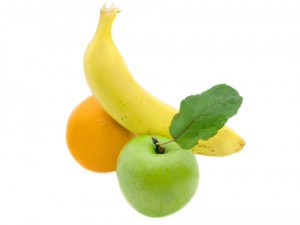On a recent flight a gentleman and I had an informative discussion about wine.
We didn’t delve into the layers of French wine laws or vintage variations but instead talked about a common wine buying frustration.
 My wine-buying confidence quickly goes downhill when the brands are nowhere to be found and I am once again staring at a sea of bottles.”
My wine-buying confidence quickly goes downhill when the brands are nowhere to be found and I am once again staring at a sea of bottles.”
His topic is one shared by many, walking into wine shops with a few suggestions from friends and wines enjoyed in the past and not being able to find a single one from the list.
With modern winemaking technology and aggressive buying strategies by distributors and retailers, chances are that there will be few atrocious styles on shelves for the consumer to purchase.
But for guidance, start with the obvious by seeking advice from a wine specialist. The advantage of shopping at a reputable wine retailer is it ensures someone will be available to confidently guide you to a style or brand similar to the one you are seeking.
But if you find you are sorting through the selections alone, remember one of the most important wine-buying strategies: Grapes grown in the same region will generally have similar style profiles.
Grapes — like apples, oranges and bananas — excel in certain growing regions of the world. It’s not often you see oranges growing in Maine; the same is true for cabernet sauvignon in Germany. Neither place has the ideal temperatures for the respective products. Searching similar wine styles is easier when you put to memory a few of the benchmark places in the world where wines (barring poor winemaking) rarely disappoint. Once your confidence in dependable regions and brands is sorted, the sea of bottles will not be as overwhelming. This simple strategy will instill instant confidence in your approach to buying. The less expensive wines will almost always have a substitution in the same price range and region. Finding premium wines with similar taste can be more challenging, simply because it’s the winemaker’s technique, style and expression that make a wine unique.
Sauvignon Blanc: Loire Valley and Bordeaux, France; New Zealand; Chile; California
THE VALUE
- 2009 Monkey Bay Sauvignon Blanc, New Zealand (about $12 retail)
THE SPLURGE
- 2008 Pascal Jolivet Attitude Sauvignon Blanc, France (about $28 retail)
Chardonnay: Burgundy, France; Australia; Chile; California; Oregon; Washington
THE VALUE
- 2009 Beringer Vineyards Founders Estate Chardonnay, California (about $10 retail)
THE SPLURGE
- 2009 Clos Du Val Carneros Chardonnay, California (about $30 retail)
Riesling: Germany; Alsace, France; California
THE VALUE
- 2008 Twisted River Riesling, Germany (about $14 retail)
THE SPLURGE
- 2007 Leonard Kreusch Riesling Estate Bottled, Germany (about $22 retail)
Pinot Noir: Burgundy, France; New Zealand; Oregon; California
THE VALUE
- 2008 Mark West Pinot Noir, California (about $15 retail)
THE SPLURGE
- 2008 Willamette Valley Vineyards Estate Pinot Noir, Oregon (about $52 retail)